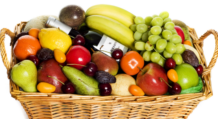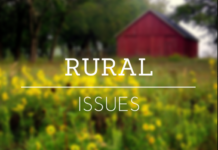At a glance, it would seem the work that Guorong Zhang is doing in a western Kansas farm field is far removed from the holiday meals that many families will soon be enjoying around the dinner table.
Zhang, a wheat breeder with K-State Research and Extension’s Agricultural Research Center in Hays, is developing hard red and hard white winter wheat varieties suited to the growing conditions in the western part of the state.
“Our work,” he says, “will reduce the cost of wheat production and increase farmers’ income.”
What’s not always immediately evident is how agricultural research like that being done near Hays and all around the United States eventually affects the price of food, though there’s evidence that supports a positive relationship.
The American Farm Bureau reported in 2020 that the average cost of a traditional Thanksgiving dinner for a family of 10 is $46.90, or less than $5 per person. That organization’s report for 2021 is not yet out, but an official (Continued on page 11)
(COSTS Continued from page 1) with AFB estimated recently that costs would likely be about 5% higher — but still less than $5 per person.
“U.S. agriculture is highly productive and efficient, leading to food that has become more affordable over time,” said K-State agricultural economist Andrew Barkley.
Barkley’s research measures how wheat breeding conducted through the Kansas Agricultural Experiment Station – or, the research arm of K-State Research and Extension – increases wheat yields over time. He has evidence to support the fact that research increases wheat yields and makes the crop more plentiful and affordable for consumers.
“Agricultural research leads to more output for the same level of resources, such as land, labor and machinery,” Barkley said. “This lowers the cost of food production. Historically, this has resulted in a huge success for U.S. agriculture; food is more affordable, which allows consumers to spend their income on other items such as cell phones, clothing, entertainment and more.”
In May, 2020, TEConomy Partners – a leader in providing research, analysis and strategy for economic development – reported that for every $1 invested in agricultural research at Kansas State University, $17 is returned to the state’s economy.
Ernie Minton, dean of K-State’s College of Agriculture and director of K-State Research and Extension, said past efforts to fund research at the university have led to major returns.
For example, he notes that in 2019 K-State wheat varieties and blends returned an estimated $337.8 million to the state’s economy, and K-State’s grazing management recommendations for beef cattle have made an annual impact between $20.1 and $23.4 million.
Those success stories are similar across the United States, whether it relates to such holiday foods as turkeys in Minnesota, potatoes in Idaho, cranberries in Massachusetts or pumpkins in Illinois.
“Agricultural research is one of the best public investments a nation can make to help its citizens,” Barkley said. “The success of public investments in food in the United States has led to enormous improvements in income levels and economic growth. Farmers benefit from higher returns, but the big winners are consumers, who pay less for food than they would if we didn’t have these research programs.”
In Hays, Zhang is working with a hard white wheat named Joe that was released in 2015 and became the No. 1 white wheat variety in the state in 2018. According to Zhang, Joe has increased farmers’ income by nearly $37 million due to improved yields, and because it has strong resistance to stripe and leaf rusts, “it could have saved farmers millions of (additional) dollars on the cost of spraying pesticides.”
“With improved varieties and other technologies in farming, American agriculture is becoming more and more efficient,” Zhang said. “Farmers are producing abundant food with less and less cost and, therefore, the price of food will become more affordable.”




